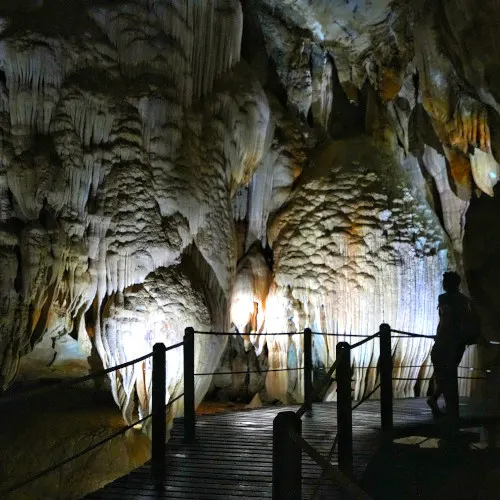
I finally arrived at Mulu Caves once again.
The last time I was here was twenty years ago, and while I can still vaguely remember the grand and magnificent scenery inside the cave, my memory is fading. Sadly, I didn't take many photographs or video clips. So, I prioritized revisiting Mulu Cave when planning our recent trip to the northern Sarawak region with Brighton Tour and Travel.
Mulu Caves is a UNESCO world heritage site one must visit if you're an outdoor enthusiast looking to explore some of the most impressive caves in the world. The park is home to one of the world's largest cave passages known to man, Deer Cave, with other show caves such as Langs Cave, Clearwater Cave, and Cave of the Winds. The trails are well-maintained, and the caves are well-lit, making it easy for visitors to explore them. Besides that, Mulu is home to the world's largest cave chamber in the world called the Sarawak Chamber,
1. Arriving at Mulu
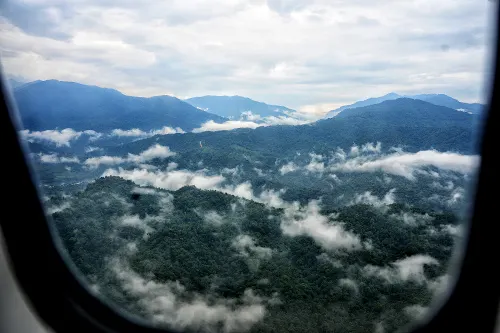
Our journey from Miri to Mulu was via MasWings airline. By the time we arrived, we were already hungry for lunch.
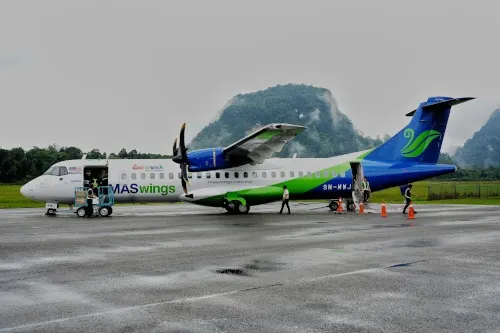
Upon arrival at the Mulu airport, a four-wheel drive vehicle provided by Mulu Marriott Resort & Spa was already waiting for us.
After a quick registration process, we checked into our room. Since our guide, Henry, was waiting for us in the lobby, we quickly joined him for our first-day excursion to Gunung Mulu National Park.
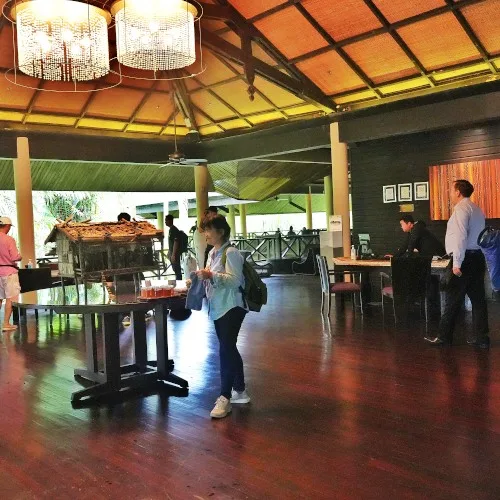
We took the transport provided by Marriott directly to the entrance of Mulu National Park Headquarters.
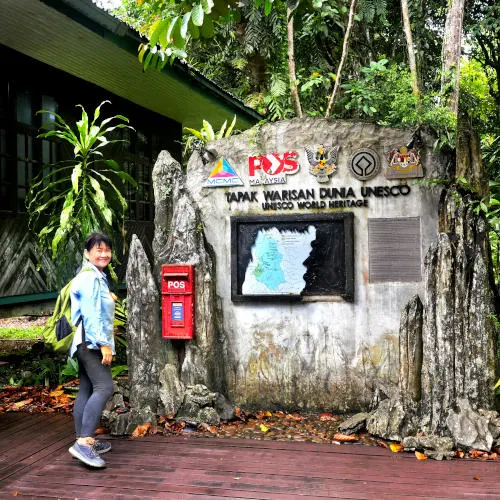
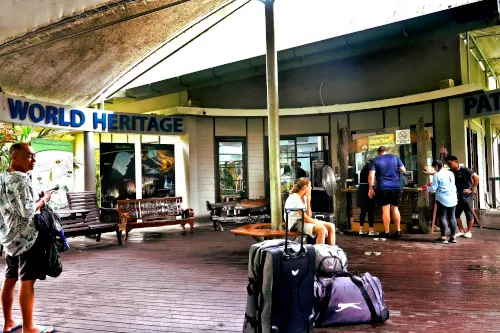
Henry helped us to arrange our lunch at Mulu Cafe before trekking into the first cave, Langs Cave. That is a wide range of choices, from western to local specialties.
The cafe had a great ambiance with a seating area facing the Melinau River.
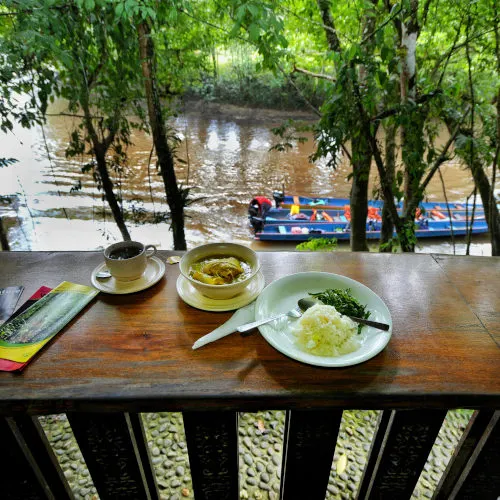
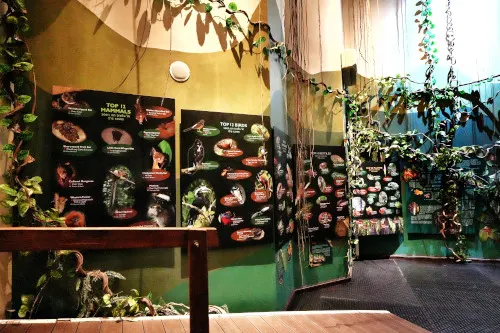
In addition, there was an air-conditioned Discovery Center where we learned about the park's caves, flora, and fauna.
Watch the video we shot at Mulu Caves (at the end of this article) 👇👇.
2. Langs Cave
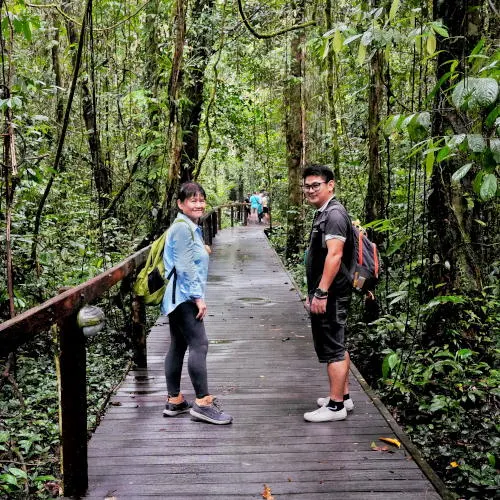
After lunch, we began our plank walk towards Langs Cave. The guided tour was divided into two days. We will visit Langs Cave and Deer Cave today, and the remaining will be completed the next day.
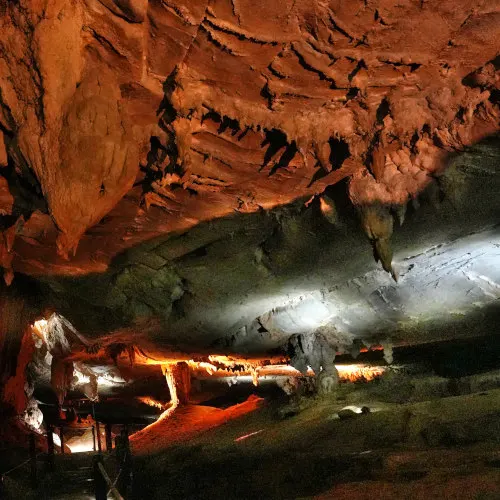
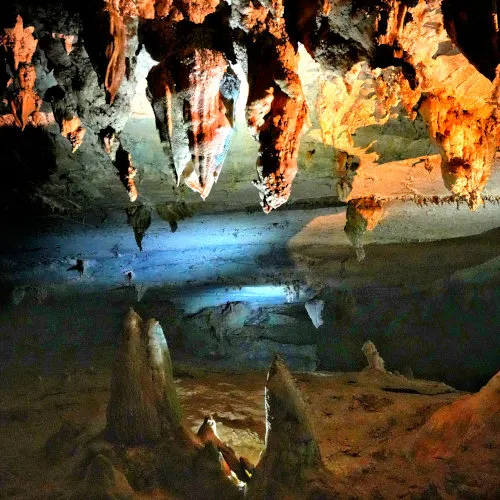
Langs Cave may not be the largest cave in the park, but it is undoubtedly one of the most beautiful caves. Walking along the 240-meter pathway inside the cave, we were fascinated by the various stalactites, stalagmites, and other formations we saw.
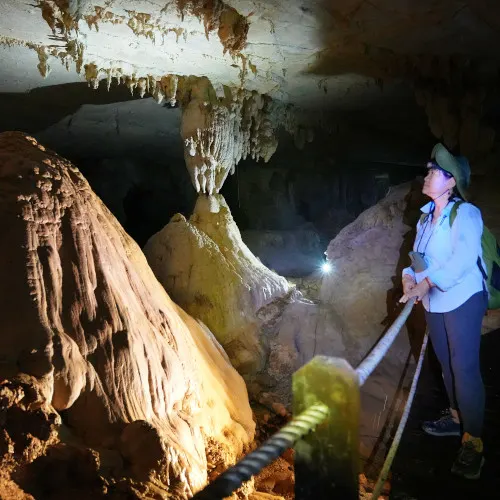
We could hear the continuous sound of water dripping from the top of the cave all along the way. However, we had to be careful as some low-hanging stalactites could cause head injury.
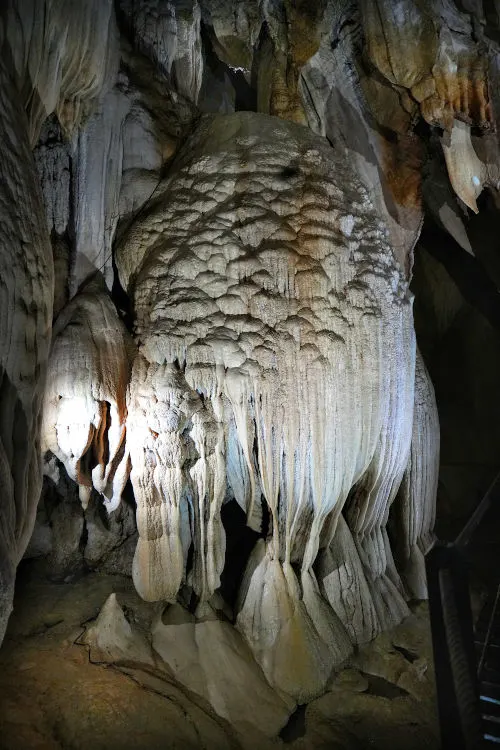
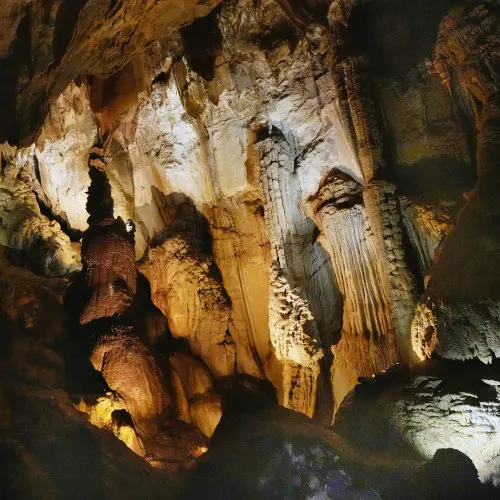
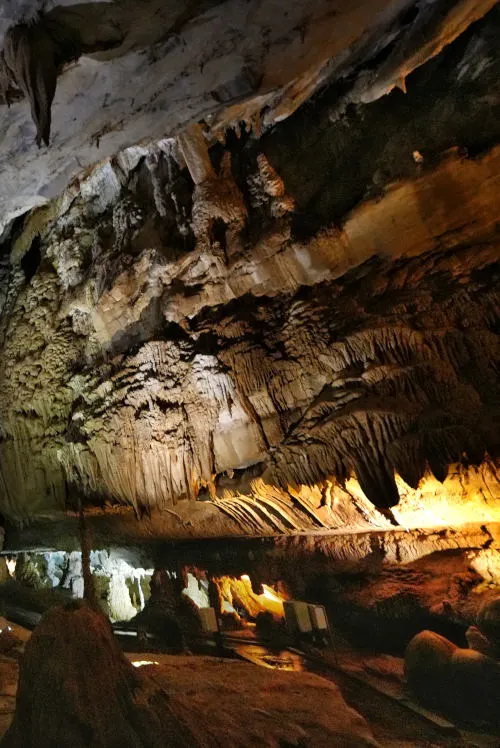
After we visited Langs Cave, we took a brief walk to another nearby cave called Deer Cave.
3. Deer Cave
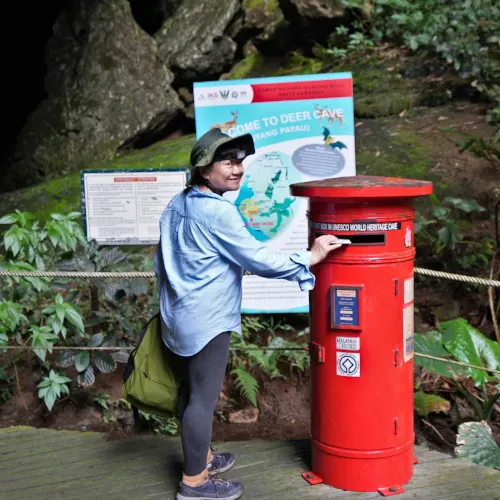
We noticed a post box with the word UNESCO World Heritage Cave when we arrived at the Deer Cave entrance. But I wonder if any postman comes to collect letters from here!
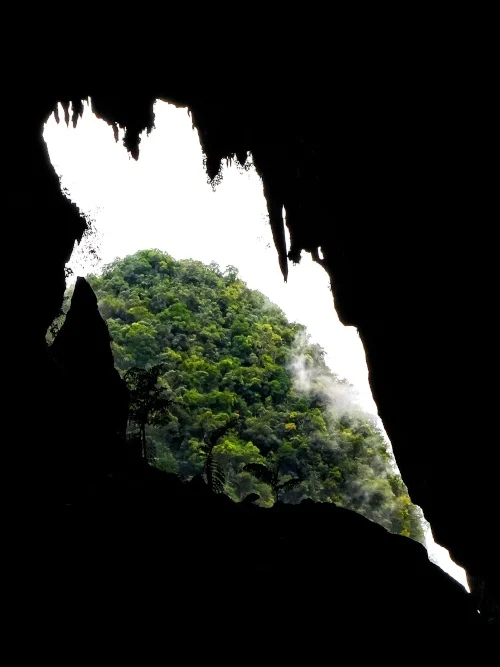
According to the information next to the postbox, Deer Cave is home to approximately 2 to 3 million wrinkled-lipped bats. These bats consume about 50 tons of flying insects every night! As a result of their high consumption, there are large piles of guano on the cave floor. Guano is a mixture of liquid and solid waste from bats, which contains a small amount of salt. The salt leaches out and forms a small concentrated deposit called salt licks. Long ago, local deer discovered that guano contains salt. Since they needed it, they would come here to lick the salt. This is how Deer Cave got its name.
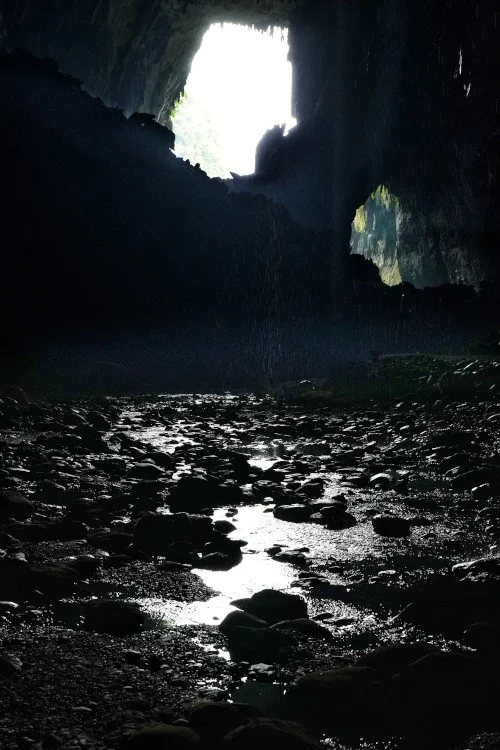
Henry explains that the warm water temperature makes the process fast and aggressive. The high rainfall causes enormous amounts of water to flow into the limestone. Since the Mulu limestone is very fine-grained and hard, it doesn't collapse easily. This has resulted in the formation of large caverns.
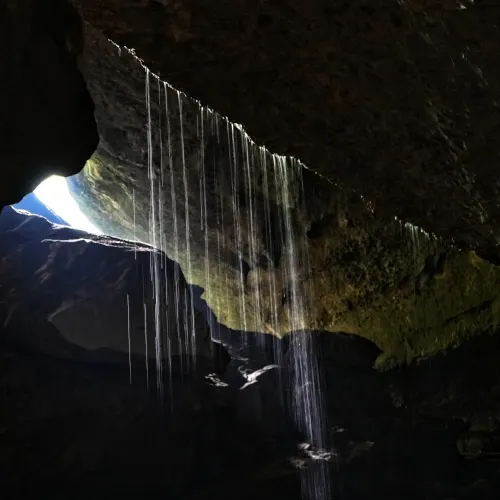
As we entered the cave deeper, a beautiful water curtain dripped down from the cave's top. Certain parts were quite dark, so we had to switch on our head torch.
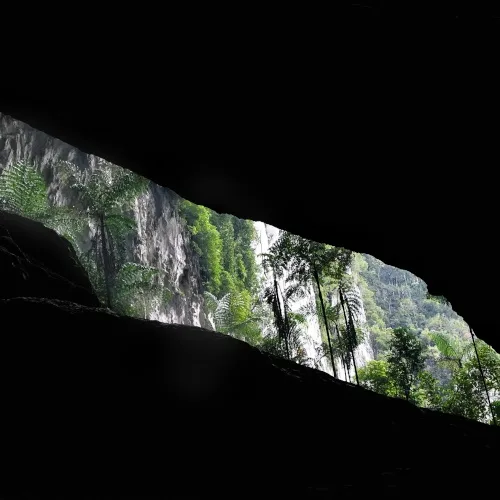
The path led us to the Garden of Eden, a cave section with a hole in the roof, allowing light to penetrate and nourish the thriving green vegetation.
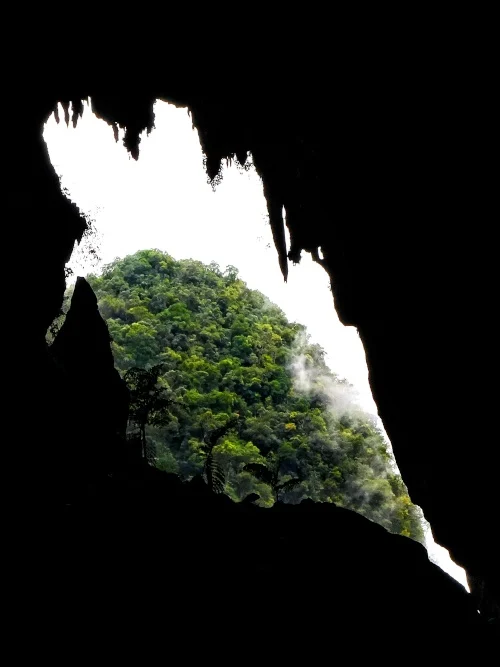
The Garden of Eden was once part of the Deer Cave, but its roof collapsed long ago, merging it with the present Green Cave. The Garden of Eden is a sinkhole with a rainforest-covered bottom. It is one of the world's best examples of a collapsed doline and a popular tourist attraction.
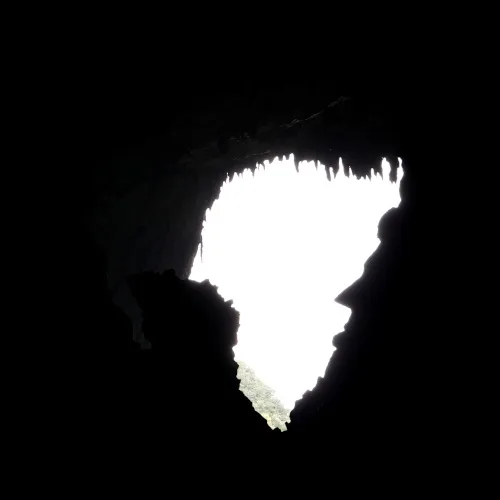
The famous profile of Abraham Lincoln guards the southern entrance of the cave. This formation of rocks resembles the profile of a past President of the United States.
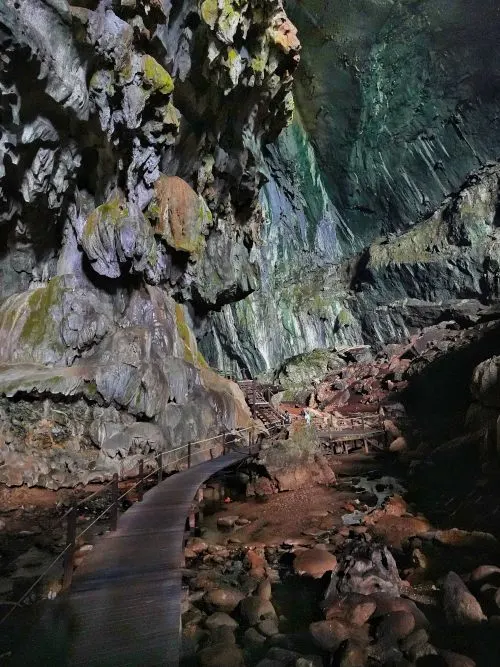
After visiting Deer Cave, we headed immediately to the bat observatory to catch the exodus of bats flying out from Deer Cave every evening. It was close to 5:00 p.m., and we did not want to miss this spectacular event.
4. Bat Watching
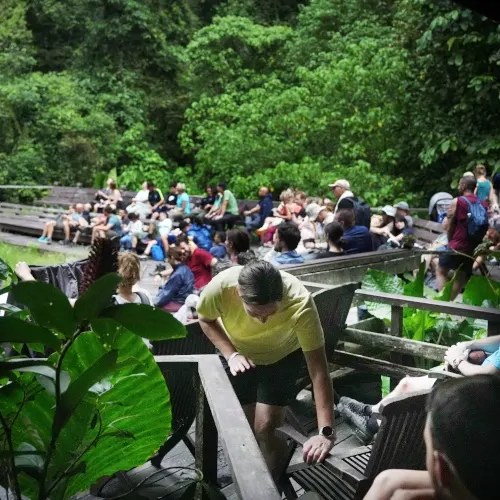
Every late evening between 5 and 7:00 pm, if the weather is good, there will be a spectacular sight of millions of bats emerging from the cave in search of food. However, our excitement was dampened by the rain. Henry informed us that the number of bats we would see would be less due to the rain.
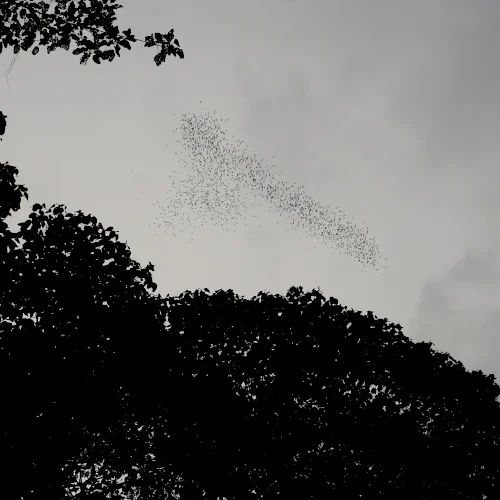
Despite this, we patiently waited for the bat exodus, which was still remarkable, albeit less than we had seen during our last trip 20 years ago.

After watching the bats, we returned to the entrance of Mulu National Park. We took the transport provided back, enjoying the relaxing ambiance of the Mulu Marriott Resort & Spa) for the rest of the day.
5. Penan handicraft center
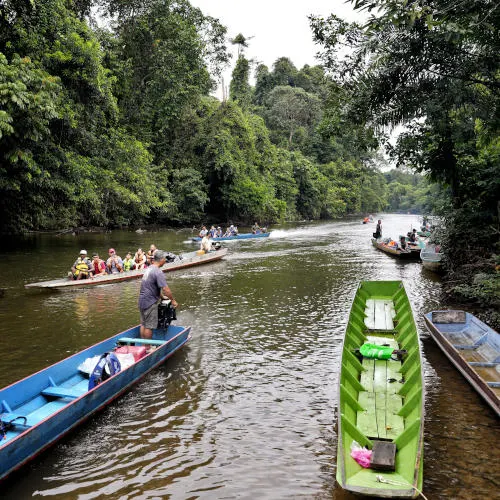
We visited the Penan Settlement at Batu Bungan the following day before heading to Wind Cave and Clearwater Cave. Batu Bungan is the most visited penal settlement in Sarawak.
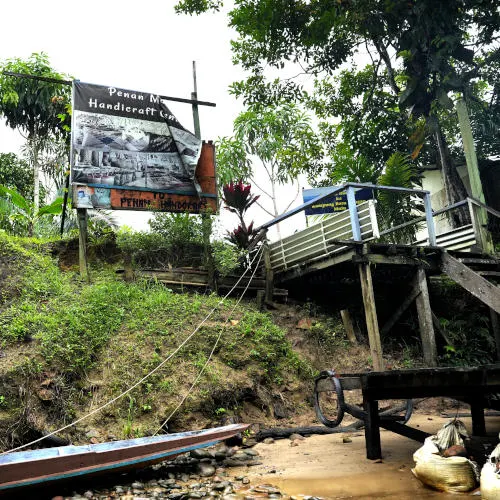
Wind and Clearwater Caves are located in different areas from the Langs Cave and Deer Cave. So Henry has arranged a boat for us and stopped by the Penan Handicraft Center first. Henry told us it was heavy rain yesterday, and the water level was high enough. Otherwise, they had to go down to push the boat as certain parts were too shallow.
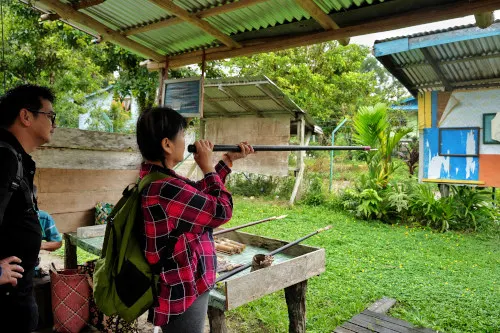
The Penan are among the last nomadic hunter-gatherers living in the world today and the only genuine nomadic people of the tropical forest of the state of Sarawak.
Today, the Penan number is more than 10,000, and less than 300 people still lead a nomadic life in the forest.
They make their homes under the rainforest canopy, deep within the vast jungle, roaming the forest with the blow pipes and hunting and searching for wild sago, their stable diet. They are also skilled weavers and make high-quality baskets and mats.
However, the increasing numbers have abandoned the nomadic lifestyle for settlement in longhouses.
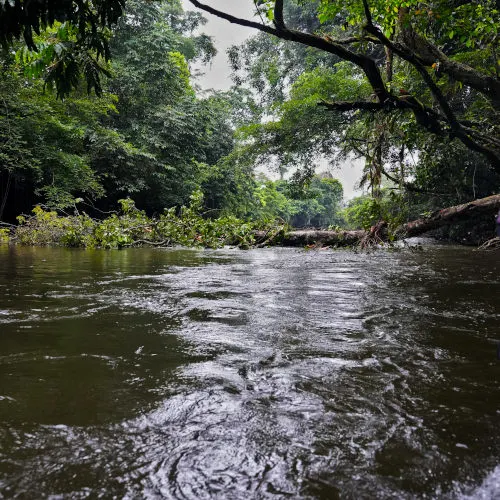
When the Mulu National Park was declared open for public visit, many Penans provided the services and knowledge of the forest. Henry is one of the young generation who works as a tour guide.

Henry's parents are working at the handicraft center. They showed us how to use the blowpipe. We also purchased some souvenirs for remembrance.
6. Wind Cave
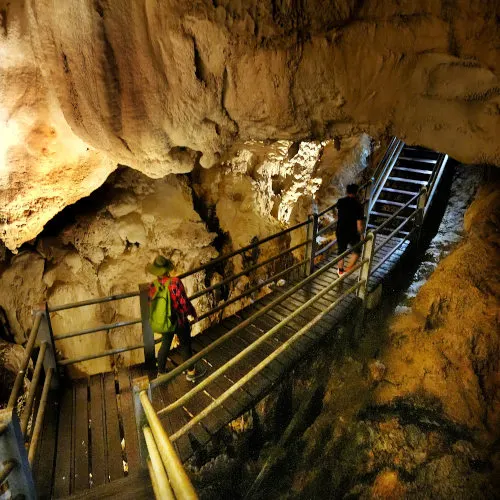
After visiting the handicraft center, we continued our cave tour to Wind Cave, which took another 15 minutes upstream.
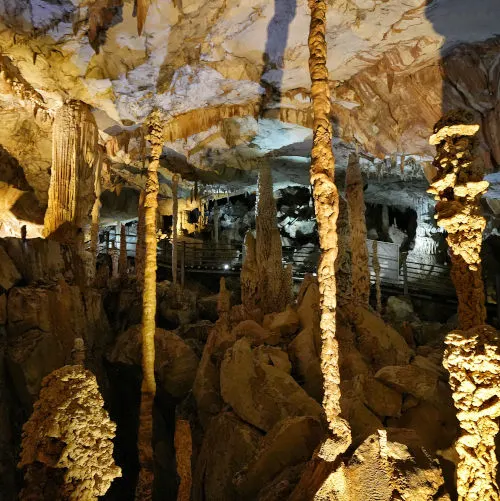
The wind in the cave is caused by the difference in atmospheric pressure of the air outside and inside the cave. When slow-moving air flows from a large space through a smaller space, it speeds up to create a noticeable breeze.
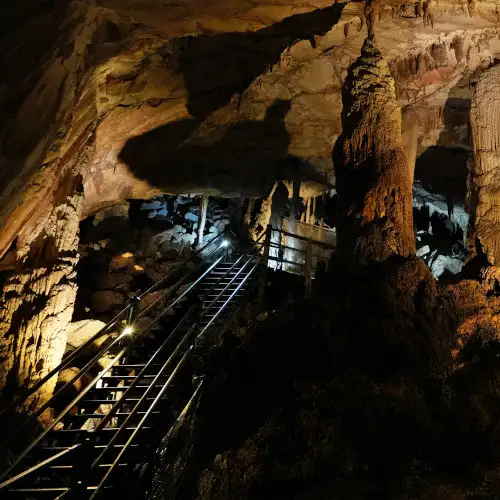
Henry shows us the formation of moonmilk in the cave, a white, creamy substance composed mainly of calcium carbonate. It is typically found in limestone caves and is believed to be created by microbial activity. The process involves water dissolving and softening the karst of caves, which consists of carbonates and carries dissolved nutrients used by microbes. As the microbial colonies grow, they trap and accumulate chemically precipitated crystals in the organic matter-rich matrix formed that way.
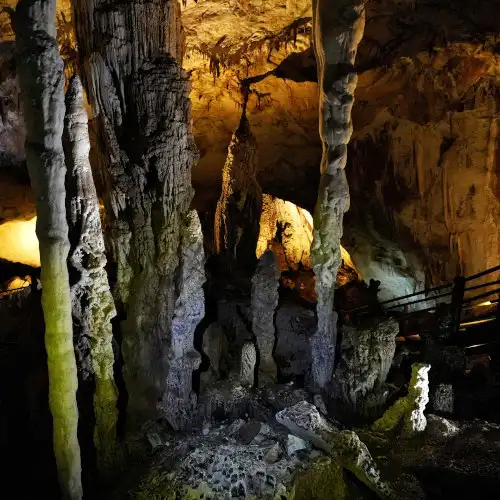
7. Clearwater Cave
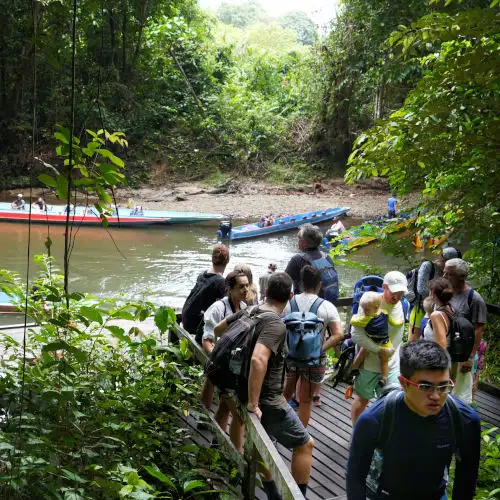
After visiting Wind Cave, we took another boat ride to Clearwater Cave.
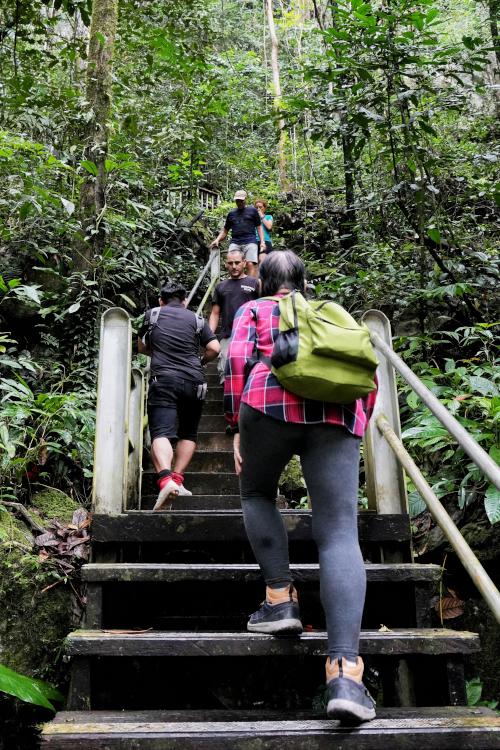
Over here, there are toilet facilities and some stores selling snacks and drinks. It is also popular for tourists to take a dip in the water.
We had to climb a few flights of stairs to reach the entrance of Clearwater Cave, which is more than 200 steps.
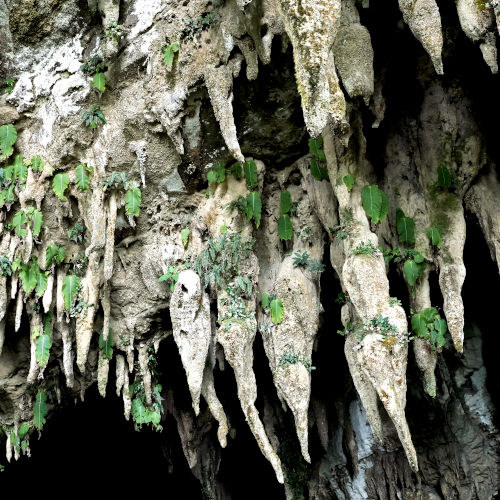

Henry pointed out the unique plants consist of only one leaf at the entrance of Clearwater Cave. The one that grows on the ground is Monophyllaea glauca, And the other hanging type is Monophyllaea pendula.
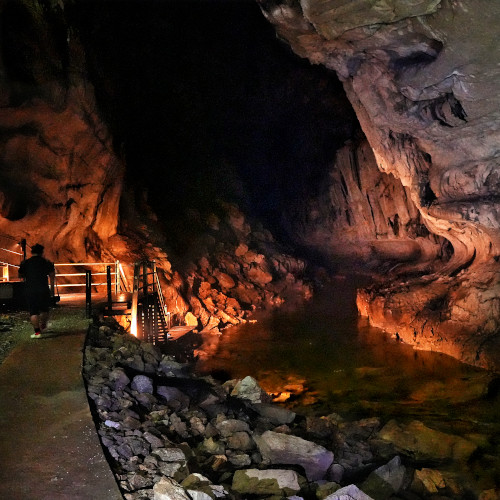
We then arrived at a place with a small opening on top of the cave, with light shining down. We could see the underground river before us, a place for adventure cave activities.
The Clearwater Cave System is believed to be one of the largest interconnected cave systems, more than 260km, and is the longest cave system in Southeast Asia. It is also one of the largest interconnected cave systems in the world by volume. There are also subterranean rivers in this area.
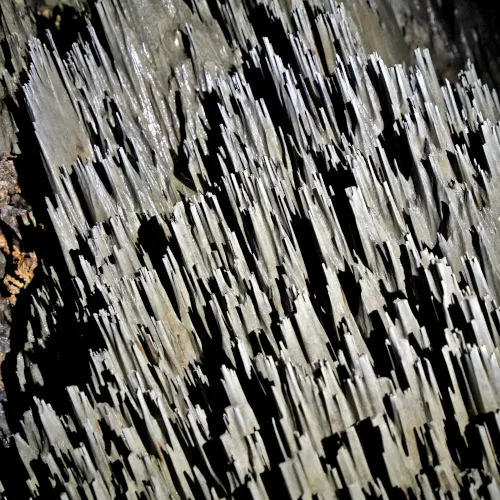
There are some phytokarst rock formations deeper inside the cave. Phytokarst is a karst rock formation created in limestone caves with sunlight. This type of karst rock formation is irregular, sharp-edged, and small-scale. The rock is eaten away by bacteria, leaving a unique pattern of small holes and ridges. The formation that we saw is like small pinnacles or a set of needles.
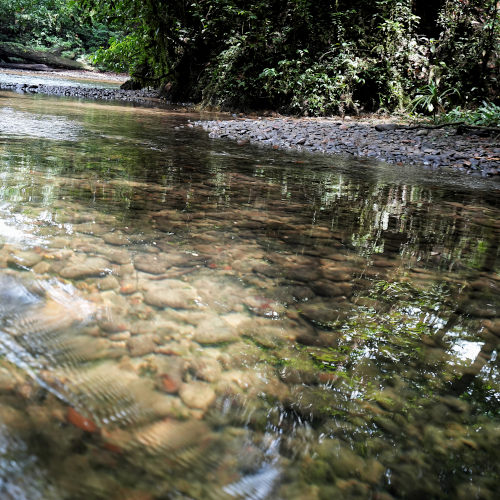
8. Our return journey

After our cave visit, we returned to the park HQ and had lunch at the cafe.
After lunch, we intend to join the canopy walk, but unfortunately, there is a limit to the number of people.

Our trip down memory lane brought back many fond memories of visiting places with our son. We usually travel independently, but we are still physically fit and plan to visit places we have never been to.
We recorded a video during our Mulu trip that can be viewed on YouTube. We also wrote a few blog posts about the places we visited during this trip, which include Miri, Brunei, Niah Caves, and Bario.
Watch the video we shot at Mulu Caves 👇👇.
We also uploaded a video of our trip to Mulu Caves. Please click the image below to bring you to our YouTube channel (shot in high definition!).

Our trip was organized by Brighton Travel & Tour Sdn. Bhd. includes Miri, Mulu, Brunei, Niah, and Bario.
